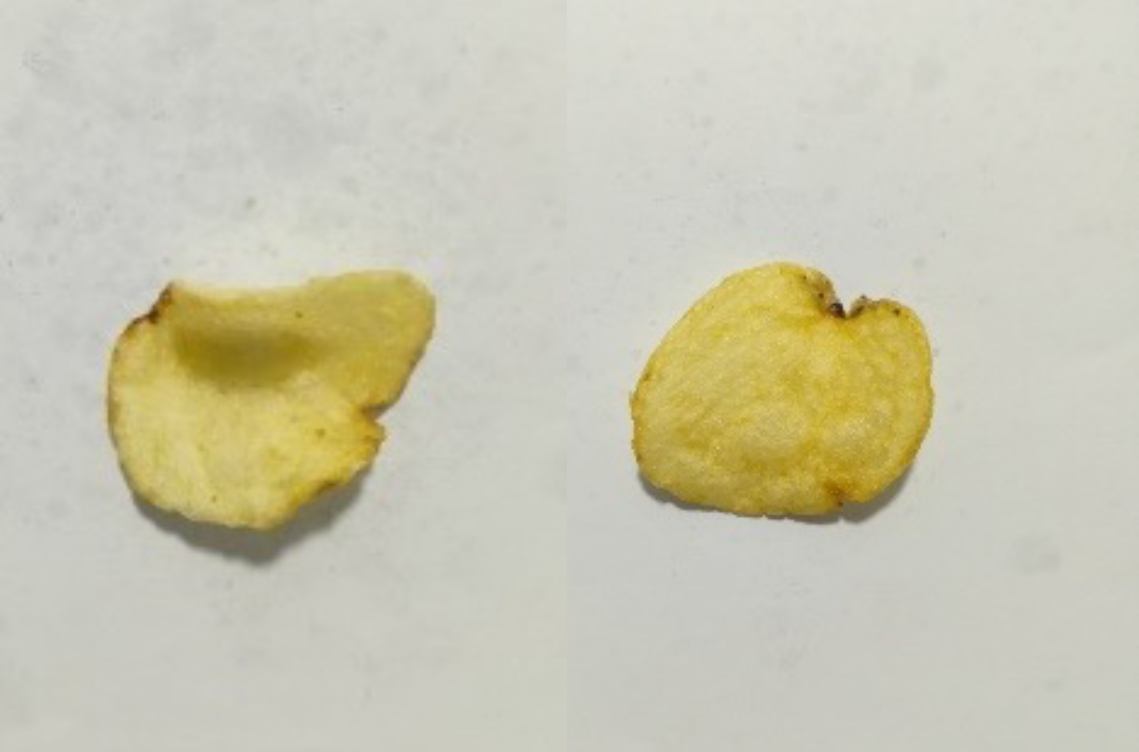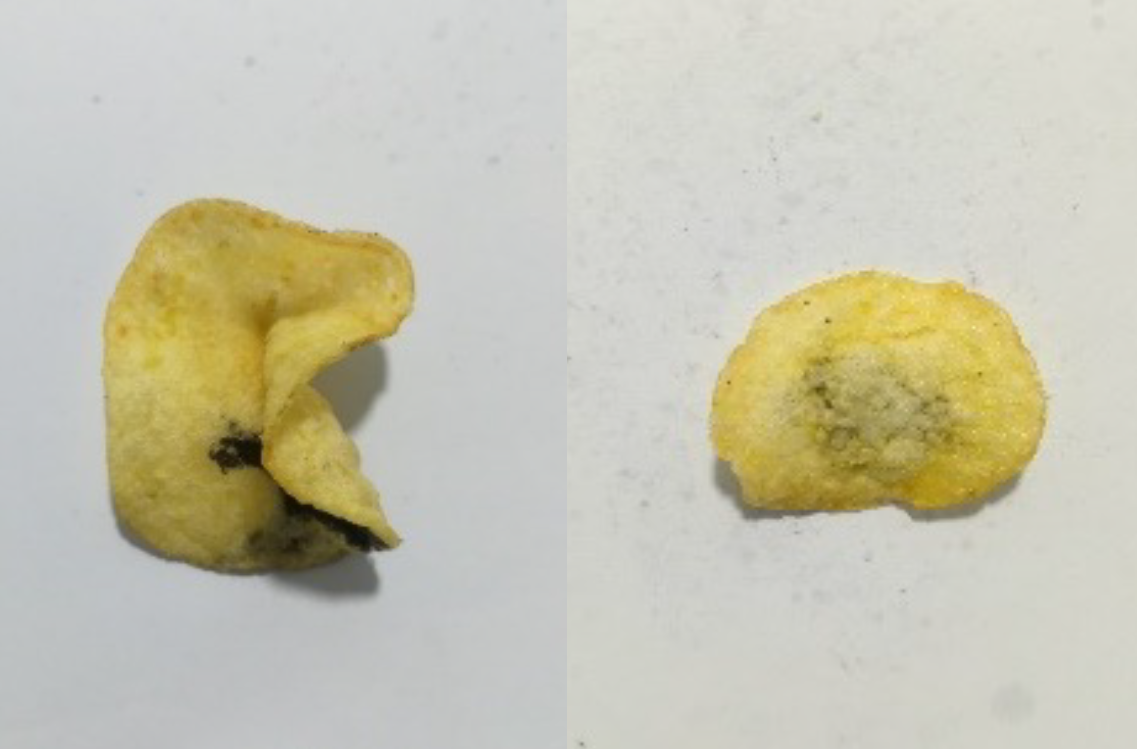High Speed and Efficient Edge AI
Optimized AI architectures that make hardware secondary
The
whitepaper
from Altera and ONE WARE highlights a practical industrial use case: potato chip quality inspection.
The challenge: reliably detecting burn marks and defects in real time on a fast production line — under strict limits on latency, power, and cost.

Good

Defective (Burn Marks)
This example reflects a broader class of industrial AI challenges:
- Manufacturing: PCB and automotive part inspection, textile quality control
- Robotics: real-time perception and decision-making
- Agriculture: drone-based crop and soil monitoring
- Healthcare & mobility: compact diagnostic and sensing devices
AI Model Optimization as the Key Differentiator
The real breakthrough lies not in the hardware, but in the AI model design.
- Minimalistic Architecture: ONE AI generated a lean network with only 6,750 parameters and 0.0175 GOPs, compared to 127 million parameters and 25 GOPs for the conventional VGG19 baseline.
- Quantization-Aware Training (QAT): Training directly in INT8 preserves accuracy during quantization — a critical step for FPGA deployment.
- Smarter, not bigger: The optimized model reached 99.5% test accuracy, while the VGG19 reference managed only 88% on the same dataset.
This demonstrates how domain-specific, optimized architectures outperform oversized networks, avoiding overfitting and focusing only on the features that matter.
HDL Generation as an Efficiency Amplifier
Once optimized, the model is compiled into RTL/HDL and deployed on Altera’s MAX® 10 FPGA.
- Removes runtime overhead
- Achieves deterministic, microsecond-level latency through parallel execution
- Runs seamlessly alongside existing FPGA control logic, with no additional hardware required
HDL generation is not the core innovation — but it acts as a multiplier, ensuring the optimized model can fully exploit the hardware.
Benchmark: MAX® 10 FPGA vs. Jetson Orin Nano
The whitepaper presents a direct comparison:
| Metric | Altera MAX® 10 + ONE AI | Nvidia Jetson Orin Nano (VGG19) | Improvement |
|---|---|---|---|
| Test Accuracy | 99.5% (INT8) | 88% (FP32) | 24× higher accuracy |
| Power | 0.5 W | 10 W | 20× lower power |
| Latency | 0.086 ms | 42 ms | 488× lower latency |
| Cost | €45 | €250 | 6× lower cost |
| Throughput | 1736 FPS | 24 FPS | 72× higher FPS |
| Size | 11×11 mm | 70×45 mm | 26× smaller footprint |
Even with decade-old FPGA technology, the optimized ONE AI model outperforms Nvidia’s Jetson Orin Nano across every dimension.
Implications for Edge AI
- Hardware becomes secondary: Performance depends less on raw compute and more on how well the AI model is optimized.
- Scalable deployment: Lower power and cost make it viable to scale across thousands of devices.
- Industrial-grade resilience: MAX® 10 devices offer unique features — on-chip ADCs, jitter tolerance, long lifecycle support — ideal for harsh environments.
- Future-proof AI: Instead of chasing ever-larger GPUs, companies can rely on leaner, domain-specific architectures that deliver more with less.
Conclusion
The potato chip inspection demo is just one example. The broader lesson is clear:
- ONE AI optimizes the architecture itself, achieving higher accuracy with far fewer resources.
- With HDL deployment, even a low-cost FPGA like MAX® 10 can surpass a modern GPU.
- The result is real-time, energy-efficient, and cost-effective AI — perfectly suited for industrial applications.
You can also check out our other use-cases for more examples.

Need Help? We're Here for You!
Christopher from our development team is ready to help with any questions about ONE AI usage, troubleshooting, or optimization. Don't hesitate to reach out!